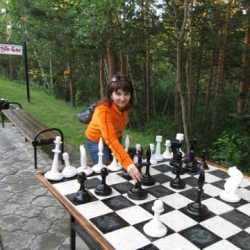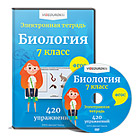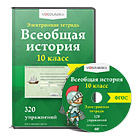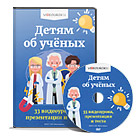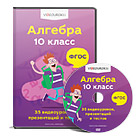
космос

Earth
*The Earth is the third closest planet to the sun
*Earth is one astronomical unit away from the sun
*It orbits the sun in 365.25 days
*It takes 24 hours for Earth to rotate on its axis
*It weighs 5.98 x 10^24kg
*It is 12 800kms wide
*The surface temperature varies between -88oC and 58oC
*It has one moon - "Luna"
*It has an atmosphere of nitrogen, oxygen and argon
*Earth is the only known planet to support life as we know it
*It has abundant water on the surface
*It is where we live!
*This photo was taken by Apollo 17 in 1972 - you can see Africa and Arabia and Antartica. Australia would be to the far right.
Земля
Земля – это планета, на которой мы живём. Уникальность
Земли в том, что на ней существует жизнь. Нигде больше
во Вселенной следов жизни до сих пор не обнаружено.

звезда
Звезда – это огромный, горячий, светящийся газовый шар.
В основном, звёзды состоят из водорода, который взаимодействует с другими химическими веществами, при этом выделяется огромное количество энергии. Благодаря этой энергии звёзды светятся.

созвездие
Созвездия – это участки звёздного неба, которые носят имена мифических
героев, животных или предметов, на которых они похожи. Самые известные
созвездия – Большая Медведица (на рисунке), Малая Медведица, Дракон, Рысь, Жираф, Цефей, Кассиопея и 12 созвездий зодиака – Овен, Телец, Близнецы, Рак, Лев, Дева, Весы, Скорпион, Стрелец, Козерог, Водолей и Рыбы.

Солнце
Солнце – самая близкая к нам звезда. Благодаря солнечному свету и
теплу, на нашей планете существует жизнь. Вокруг Солнца вращаются
планеты нашей Солнечной системы, включая Землю.
Путь вращения планеты называется орбитой.

Луна
Луна – естественный спутник Земли. Она в четыре раза
меньше нашей планеты и вращается вокруг неё.

фазы луны
В течение месяца Луна меняется - то становится совсем невидимой (фаза новолуния), то превращается в круг (наступает полнолуние).
Это происходит потому, что при освещении Солнцем мы чаще всего
можем видеть лишь отдельную часть Луны.

затмение
Затмение происходит либо когда Земля попадает в тень,
отбрасываемую Луной (солнечное затмение – как на
рисунке), либо когда Луна попадает в тень Земли (лунное
затмение). Каждый год мы можем наблюдать не более 7
затмений.

комета
Кометы – это тела Солнечной системы, которые двигаются вокруг Солнца
по очень вытянутым орбитам. Когда комета находится далеко от Солнца,
она выглядит как слабо светящееся пятнышко овальной формы, но когда
она приближается к Солнцу – у неё появляется «голова» и светящийся
«хвост». Мы можем увидеть комету и её светящийся хвост в небе всего
несколько раз в столетие.

метеорит
Метеорит – это каменистое или железное тело, попадающее
на Землю из межпланетного пространства. Иногда мы можем
наблюдать метеоритные дожди – появление на ночном небе
множества падающих метеоритов (народное название – звездопад).

астероид
Астероиды (малые планеты) – это тела Солнечной системы с
диаметром от 1 до 1000 км. Орбиты большинства астероидов
находятся между Марсом и Юпитером. Самые известные
из них – Церрера, Палада, Юнона и Веста.

галактика
Вселенная состоит из галактик – огромных звёздных
островов в виде спиралей, эллипсов или других форм.

Млечный путь
Млечный Путь – так называется галактика, в которой находится
наша Солнечная система и многие другие звёздные системы.

туманности
Туманность – это светящееся облако разреженных газов и пыли
внутри галактики.

Северное сияние
Северное сияние – это быстро меняющееся свечение
отдельных участков ночного неба. Оно происходит из-за
свечения разреженных слоёв воздуха на расстоянии
от 90 до 1000 километров от Земли.

бинокль телескоп
Для внимательного изучения звёздного неба можно
использовать бинокль или телескоп. Они увеличивают
небесные объекты в несколько раз, что позволяет
лучше разглядеть звёзды и созвездия.

обсерватория
На огромном экране, имеющем форму полусферического купола
получают изображение звёздного неба. В обсерватории можно
увидеть движения Солнца, Луны, планет, астероидов и комет,
a также затмения, полярные сияния и другие небесные явления.

ракета
Ракета – это летательный аппарат, с помощью которого человек получил возможность побывать в космосе, на Луне и выводить на околоземную орбиту спутники и космические станции. На фотографии мы видим старт ракеты.

космонавт
Космонавт – это человек, который отправляется в открытый
космос на ракете для проведения разных экспериментов.
Первый космонавт, побывавший в космосе в 1961 году –
Юрий Гагарин.

В космосе нет силы земного притяжения, поэтому предметы часто находятся в невесомости и движутся беспорядочно, а космонавты могут «летать» и даже быть в положении вверх ногами.

спутник
В 1957 году на околоземную орбиту был запущен первый
искусственный спутник. Спутники постоянно двигаются вокруг
Земли и позволяют наблюдать, что происходит в космическом
пространстве и на нашей планете.

планеты Солнечной Системы

Вокруг Солнца вращаются восемь планет – Меркурий, Венера,
Марс, Земля, Юпитер, Сатурн, Уран, Нептун.

Mercury
*Mercury is the closest planet to the sun.
*One Astronmical Unit = 150 million kilometres. Mercury is 0.387 AU from the sun
*It is the second- smallest planet
*It orbits the sun in 87 days
*It takes 59 days for Mercury to spin on its axis
*It weighs only 6% of what the Earth masses
*It is about 38% the diameter of the Earth
*The surface temperature ranges from 100oK to 543oK (-173oC to over 270oC)
*It has no moons
*It is named after the Winged Messenger to the gods
*It is mostly made of iron
*It has very little atmosphere
*Mercury has many craters - it has been hit many times by meteorites, espcially early in its history
*The first man-made satellite to send back pictures of Mercury was called Mariner 10
Меркурий

Venus
*Venus is the second-closest planet from the sun
*It is usually 0.72 AU from the sun
*It is the sixth-largest planet
*It orbits the sun in 224.7 days
*It spins on its axis in the *opposite* direction to Earth (counter-revolutionary) and this takes 243 days
*It masses about 82% of the Earth's mass
*The surface temperature is about 462oC - the hottest planet in the solar system
*It has no moons
*It is named after the goddess of love
*It is mostly made of iron
*It has an atmosphere of sulfuric acid and carbon dioxide that has produced a "greenhouse effect"
*We can see the surface of Venus by using radar images
*It was first visited by Mariner 2 in 1962
*The USSR's Venera 7 landed on Venus and was the first probe to land on another planet
*Venus is easily seen from Earth and is the brightest object in the sky. It is often wrongly called the "morning star" or "evening star"
*It is often called Earth's sister planet because the two planets are so similar in size. The mystery is why the turned out so differently.
Венера

Земля

Mars
*Mars is the last planet of the inner solar system
*It is the fourth planet from the sun
*It is usually 1.524 Au from the sun
*It takes 1.9 earth years to orbit the sun
*It takes 24.5 hours to spin on its axis
*It masses about 11% of the Earth
*It is 53% as wide as the Earth
*The surface temperature ranges between -140oC and 20oC
*It has two moons - Phobos and Deimos
*It is named after the god of war
*It has a thin atmosphere of carbon dioxide (95%),nitrogen, argon and water
*Its low density probably relates to a core of iron and iron sulfide
*It may have had running water at some time in the past
*It may have liquid water on the surface now (this is a point of much investigation)
*The polar caps are made of solid carbon dioxide
Марс

Jupiter
*Jupiter is the fifth planet of the solar system. It is the first planet of the outer solar system
*It is 5.20 AU from the sun
*It orbits the sun in 12 years
*It rotates about its axis in 10 hours
*It masses more than twice all the other planets combined, 320 times that of Earth
*Its diameter is 1300 times that of Earth
*It has a gaseous surface
*It has at least sixteen moons and a minor ring system. The moons are mostly named after Zeus (Jupiter's) lovers
*It is named after the King of the Gods, ruler of Olympus and patron of the Roman states
*It is mostly made of about 90% hydrogen and 10% helium (by numbers of atoms, 75/25% by mass) with traces of methane, water, ammonia and "rock"
*It may have a core of rocky material. Most of the plaet is probably liquid metallic hydrogen
*1n 1994 a comet (Shoemaker-Levy) crashed into Jupiter -- the debris could be seen easily with a telescope
*The Great Red Spot (GRS) discovery is usually attributed to Cassini, or Robert Hooke in the 17th century.
*The GRS is an oval about 12,000 by 25,000 km, big enough to hold two Earths.
* Infrared observations and the direction of its rotation indicate that the GRS is a high-pressure region whose cloud tops are significantly higher and colder than the surrounding regions.
Юпитер

Saturn
*Saturn is the sixth planet from the sun
*It is 9.54 AU from the sun
*It orbits the sun in 29.5 years
*It takes 11 hours for Saturn to spin on its axis
*It weighs 95 times that of the Earth
*It is 9.42 times wider than the Earth
*It has a gaseous surface.
* Saturn's interior is hot (12000 K at the core)
*It is named after Zeus' father, the god of agriculture
*Saturn has 18 named moons
*It has the best developed ring system in the Solar sytem
*The rings were discovered by Gallileo using an early telescope
*The rings are very thin - ony 1.5km wide
Сатурн

Uranus
*Seventh planet from the sun
*19.218 AU from the sun
*Orbits the sun in 84 years
*Rotates on its axis over 17 hours
*Third largest planet
*Mass 14.5 x Earth
*Radius is 4.1 that of Earth
*It has a ring system and 21 known moons. The moons are named after Shakespearean characters.
*It is named after the ancient Greek deity of the heavens
*It is the first planet to be discovered in modern times -- by Herschel
*It has been visited by only one spacecraft - Voyager II
*Uranus rotates about an axis parallel to the ecliptic -- this is very unusual
*Uranus is composed primarily of rock and various ices, with only about 15% hydrogen and a little helium * Uranus (and Neptune) are in many ways similar to the cores of Jupiter and Saturn minus the massive liquid metallic hydrogen envelope.
* It appears that Uranus does not have a rocky core like Jupiter and Saturn but rather that its material is more or less uniformly distributed.
* Uranus' atmosphere is about 83% hydrogen, 15% helium and 2% methane.
Уран

Neptune
*Neptune is usually the 8th planet from the sun. Its orbit intersects with that of Pluto so occasionally it is the most distant planet
*It is usually 30 AU from the sun
*It orbits the sun over 165 years
*It rotates about its axis over 16 hours
*It masses 17x that of the Earth
*Its radius is 3,88 x that of the Earth
*It has a ring system and 8 known moons; 7 small ones and Triton.
*It is named after the god of the sea
*Neptune's blue color is largely the result of absorption of red light by methane in the atmosphere but there is some additional as-yet-unidentified chromophore which gives the clouds their rich blue tint.
*Neptune has been visited by Voyager 2 and observed by the Hubble Space Telescope
*Neptune's Great Dark Spot disappeared
Нептун

Pluto and Charon
*Pluto is the furthest planet from the sun.
*It has a satellite - Charon - that is almost as big as it -- some people call Pluto and Charon together a "double planet"
*They orbit the sun every 248 years
*Pluto has an eccentric axis which it rotates around each 6.5 days
*It has a surface temp of- 230oC
*Little is known about its atmosphere
*It is 2400km in diameter
*It is the smallest planet
*It is hard to calculate the individual masses of Pluto and Charon
*It is named after the god of the Underworld
*It was discovered by Percival Lowell
*It is the only planet not yet visited by a human spacecraft
Плутон и другие транснептуновые объекты




